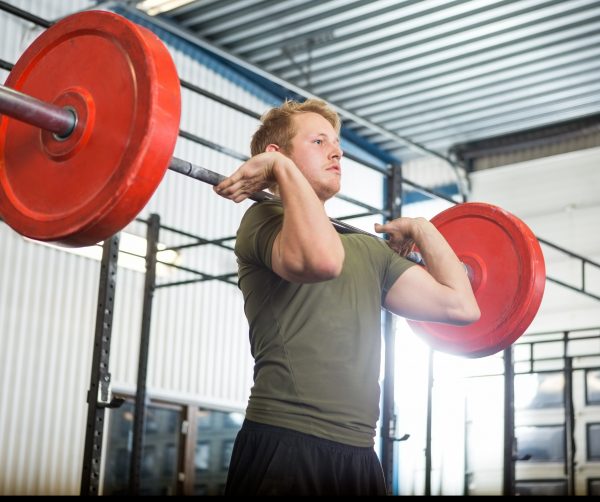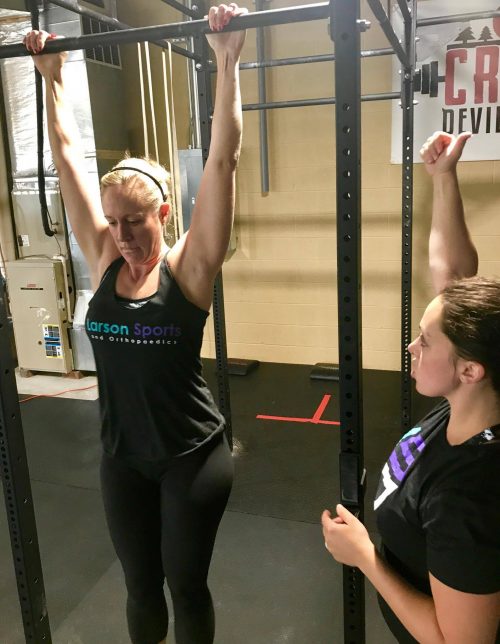
Dr. James Larson is an orthopedic surgeon specializing in sports medicine and arthroscopic surgery. He also holds a CF-L1 certificate and is a Certified BFR Specialist. He supports weight training and high-intensity exercise throughout the lifespan. He started LSO to keep more people moving better, longer.
One of the most frustrating things about treating patients is their resistance to exercise. It’s even harder to accomplish our goal of keeping people active when their friends, family, and even their own family doctors tell them the popular High-Intensity Interval Training (HIIT) workouts are too dangerous. Everyone is worried about a WOD injury. In fact, they are a bit too worried. A lot of this perception of danger came from a single study that showed high injury rates. But those numbers were not particularly accurate and the study was retracted eventually.
You are probably familiar with HIIT-style gyms even if you haven’t heard that term before. High-Intensity Interval Training is a form of fitness training alternating short periods of intense exercise with similarly short recovery periods. HIIT gyms typically have hour-long group classes. They usually have a set Workout Of the Day, or WOD. Most workouts often involve high-intensity weight lifting performed at a rapid pace or intense gymnastic exercises in short bursts.
HIIT Workouts Focus on Functional Fitness
Many people wonder if this type of exercise is right for them. If you listen to friends and neighbors, you would be insane to set foot in HIIT gyms. If you listen to fitness gurus, they’ll tell you to dive right in. Regular people just don’t know what to believe! But the science shows the real risk of injury is wildly overblown. Let’s just start off by saying that any exercise program has some amount of risk. But so does life in general. Working in an orthopedic clinic, we see more injuries from daily life than we do from any sport or training program. The benefits of exercise greatly outweigh the risks in nearly all people. There are vanishingly few situations where exercising is completely forbidden. And in the case of HIIT workouts, coaching plays a big role in safety.
Coaching Helps Prevent Injuries
Coaches also play a big role in scaling workouts to their athletes’ abilities. Knowledgeable coaches and trainers can adapt a workout to any age or fitness level. HIIT classes are usually small and, when coached correctly, focus on lifting form to prevent injury. They are increasingly popular because they achieve fantastic results. They are termed “functional fitness” because they improve your ability to perform everyday activities. I mean, who doesn’t have to squat everyday? Cars, toilets, low couches – a solid squatting ability is essential! And most of the workouts in a HIIT gym involve squatting and plenty of other functional motions.

Studies Show HIIT Workouts Are Safe
One study compared HIIT to sports including long distance running and soccer. They found a 19% injury rate in HIIT. Their rate of injury was identical to that of long-distance runners that were also evaluated in the study. Another study compared soldiers that participated in HIIT gyms versus traditional Army physical training. The soldiers doing the WODs had a 12% rate of injury compared to 14% of those who completed traditional Army PT (stretching, running, and calisthenics).
A third study had a much greater number of participants and broad definition or injury. “Injury” was classified as any sensation of pain that prevented someone from training for any length of time. Even if that was only one day. They reported 73.5% injury rate over the course of the study, and it took place over a few years. This may sound high but breaks down to only 3.1 injuries per 1000 hours trained. This is the exact same rate of injury as olympic weightlifting and gymnastics. Interestingly enough, this rate is far less than soccer, football, or ice hockey. While HIIT athletes have similar risk of injury to other common sports, their rates of specific injuries are higher. They are 25-30% more like to experience a shoulder injury and are 6% more likely to suffer overuse injuries.

The most interesting conclusion was coaching matters. Injuries decreased significantly when athletes had access to coaches who were involved in their training, rather than acting as a human stopwatch for the class. Females had a lower injury rate than males because they were significantly more likely to seek technique help from a coach.
HIIT is no more dangerous than any other sport.
We personally recommend it as a way to rebuild your body after physical therapy is complete. We also recommend it to people who want to lose weight, correct health issues and protect themselves from the loss of function associated with aging. And our mission is to try and get that rate even lower. What if coaches can recognize potential problems before they become injuries? Through our blog, we hope to educate the public. Especially regarding recovery, preventative exercises, and how to safely return to the gym following injury. Our goal is to help athletes move better and stay active their entire life.
We personally recommend it as a way to rebuild your body after physical therapy is complete. We also recommend it to people who want to lose weight, correct health issues and protect themselves from the loss of function associated with aging. And our mission is to try and get that rate even lower. What if coaches can recognize potential problems before they become injuries? Through our blog, we hope to educate the public. Especially regarding recovery, preventative exercises, and how to safely return to the gym following injury. Our goal is to help athletes move better and stay active their entire life.

